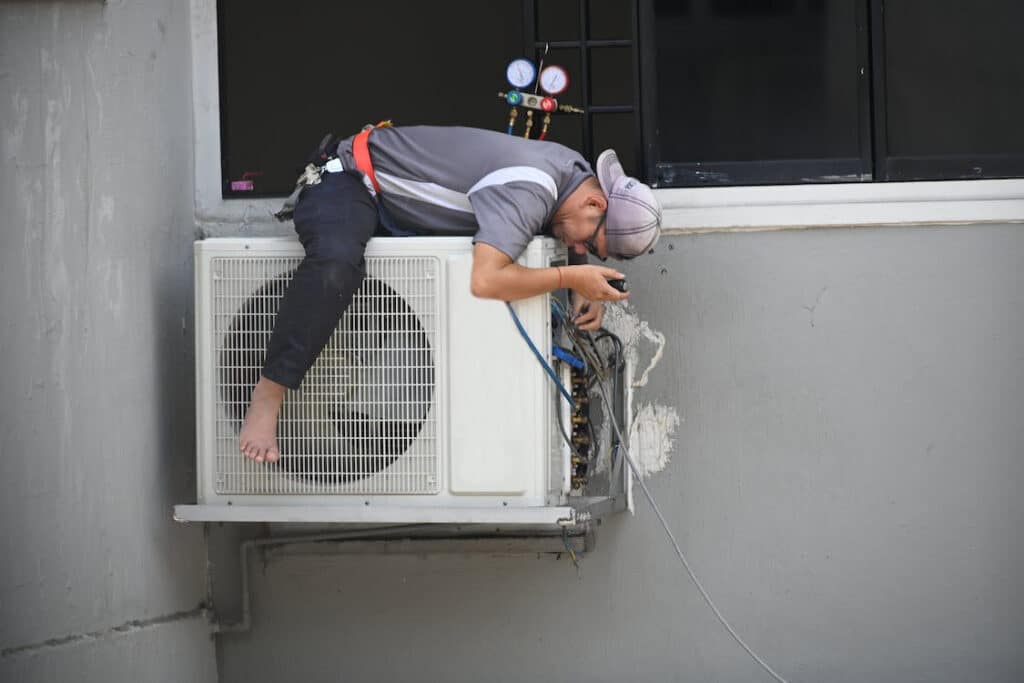Everybody loves central air. It’s an absolutely wonderful invention that allows us to live comfortably in otherwise disagreeable climates. But there are several major drawbacks to central air as a heating and cooling method which have left homeowners frustrated and wanting a better way of doing things. In time past, there wasn’t much in the way of different options to alleviate these frustrations, but recent advances in technology and new ways of using “old” systems has opened up new options for homeowners. Let’s go over how ductless HVAC systems have changed the game for indoor air.
Looks Like a Duct, Sucks Like a Duct
With central air there is usually a single return per air handler where the warm air from inside the home is sucked into that air handler. Some homes will have two returns for a single air handler, or will have two air handlers for a single floor of the home if it has a large square footage. There is also usually one air handler per floor of the home. But even those extra returns aren’t sufficient to adequately perform some basic functions.
Those returns are where the air in the home is filtered. Trying to pull the dust-laden air from the most distal room of the house through those returns is very hard. There is a lot of air that won’t be filtered. That means lots of dust.
That indoor air pollution (IAP) of dust, pollen, allergens, etc. is one of the major complaints about central air. That labyrinthine system of ductwork provides a lot of surface area for dust to collect on. Every time the air handler kicks on it’ll dislodge some of that dust and blow it throughout the house, aggravating allergies and making for more household cleaning. The lack of adequate filtration from those returns doesn’t help anything in this regard, either.
In fact, dust is such a problem in central air that duct cleaning has now become a common service offered and performed by most HVAC contractors and companies. The service involves using an industrial-sized vacuum with a very long hose that has a spinning brush on its head. The brush will scrape the insides of the ductwork clean and the vacuum hose will suck up all that it dislodges. The bags inside of the duct cleaning machine after the service is performed is really a sight to behold. You’d never think there would be – that – much dust, debris, even dead animals, inside of the ductwork!
The other issue that homeowners have about traditional central air is that the heating and cooling provided is not even, and trying to control those asymmetrical changes in temperature is terribly inefficient. Every house will naturally have parts of it that gain and lose heat faster than other parts. Southern, western, and southwestern rooms will naturally gain heat faster than other parts of the house due to the amount of sunshine those rooms receive.
With a traditional HVAC setup, there will be either a single thermostat to control the entire house, or alternatively, one thermostat per floor of the home. If you’re aiming to change the temperature of those rooms that are out of range with the rest of the home, you’ll have to either wait for the thermostat to kick on when the air around it heats up, or manually turn it on. If you wait for it to kick on automatically, essentially what you’re doing is waiting for the air surrounding the thermostat to warm up past the set temperature, just to cool that one part of the home that’s out of sync. If instead you turn the AC on just to cool that one part of the home — you’re cooling the entire house just to cool off one room!
It’s not hard to see why that way of doing things is obscenely inefficient; having to heat or cool the entire house to change the temperature of one or two rooms is not something that is acceptable these days. Maybe back in the dark ages, but we’re not savages anymore. We have better ways of doing things!
Ducts. Who Needs ’em?
Enter the ductless system. A ductless heating and cooling system, depending on the needs of the homeowner and the layout of the house, is superior to a traditional forced air system in several key ways. The way a ductless system is setup, by having multiple heat pumps (AC units) throughout the home, you can easily adjust the temperatures as needed, from much smaller, much more efficient, machines.
The smaller heat pumps of a ductless system consume vastly-less energy than the single, or twin, large units of a central air system. When you combine that with the extreme efficiency these ductless systems have, you have a way of heating and cooling your home that will have – much – lower costs of operation than a forced-air system would.
So for those rooms that are warming up too fast in summer, instead of kicking on the HVAC system of an entire home or floor to deal with one, single, room – you can use one, single, heat pump within that room to change the temperature of that room. This ability to heat and cool on a smaller scale is where the majority of the savings come in. When you consider that 40% or more of the electric bill of a typical home is directly attributable to heating and cooling costs, that’s an incredible benefit!
With some ductless systems you also have the ability to link multiple heat pumps together, creating ‘zones’, within the home and allowing them to be activated in unison and programmed that way. There are whole ductless systems that have gone ‘smart’ and will allow you to control the environment within your home from your tablet, smartphone, and computer. They are highly programmable and adjustable which will allow you to fine-tune the system for maximum savings.
Indoor Air Quality Thru Ductless HVAC Systems
IAQ is an often overlooked benefit of a well setup ductless HVAC system. As mentioned earlier, traditional central air systems will have one or two returns in which to pull and filter all of the air of the house through. With the ductless systems, there is one filtration point for every heat pump within the system. Having a filtration point within each room, hallway, and several within a zone, creates a massive difference in the air quality within the home when compared to a traditional central air system.
The filtration on ductless heat pumps is also multi-stage. These heat pumps will filter to a much, much, higher standard than what the returns on a forced-air system can. When you have multiple HEPA filters throughout your home, up to and more than one per room, you can see how much better a ductless system is at filtering household air than what the traditional forced-air system can do.
With all of these benefits it’s not hard to see why many homeowners are switching over to a ductless HCAC system for all the heating and cooling needs of their home. But – and this is key to remember – not every home will benefit from a ductless system. Every home, and every customer, is different. Each is unique and will have their own needs, which means benefitting from one system over another. A properly set-up and well-designed traditional forced-air system can operate just as well as a ductless system in the right home.
Who You Gonna Call?
This is where MightyServ’s expert staff come in. Whatever questions you have about an HVAC system for your home, we would love to go over your options with you and work with you to discover the best system for your needs and your home, so give us a call or fill out a contact form today!









